“All of our people all over the country – except the pure-blooded Indians – are immigrants or descendants of immigrants, including even those who came over here on the Mayflower.”
President Franklin Delano Roosevelt
The 32nd President of the United States
“We must protect the forests for our children, grandchildren and children yet to be born. We must protect the forests for those who can’t speak for themselves such as the birds, animals, fish and trees.”
Qwatsinas (Hereditary Chief Edward Moody)
Nuxalk Nation
Note from The Big Gear Show:
There are hundreds of living tribes today, and our country’s relationship with Native Americans is still evolving with a growing emphasis on tribal sovereignty and their particular expertise in managing lands.
The Big Gear Show and our industry partners are also evolving our views. This President’s Day, we encourage a deeper dive into our history and this continually progressing relationsip with America’s first people.
Americans celebrate Presidents Day as a day to honor the office of the Presidency and all who have served as our Commander in Chief. It’s a day when we reflect on their contributions to the country and the impact those contributions have made.
One of the more significant contributions that Presidents have made impacting the outdoor industry is in the area of public lands. Public lands are the central infrastructure for outdoor recreation, such as our many national parks and forests, recreation areas, and wildlife refuges. From revered Presidents like Abraham Lincoln and Franklin Delano Roosevelt to controversial ones like Andrew Jackson and Donald Trump, Presidents across the political spectrum have shaped the public lands we all enjoy today.
At the same time, as we all acknowledge that these lands belong to all Americans, we cannot overlook the impact on the indigenous people who were here long before the first colonists arrived in North America. As the Wilderness Society points out in its overview, How did Public Lands Come to Be? – the Constitution does not define public lands. Lands not under private or state ownership were considered public lands – even those inhabited by indigenous peoples.
So as we recognize the legacy that the Presidency has had with our Public Lands, we should also reflect on the complicated connection to our country’s treatment of American Indians and their tribal lands. At the same time, we can consider future Presidents’ opportunities to shape our public lands heritage in concert with indigenous people whose connection to these lands precedes ours by centuries.
This President’s Day, we recognize the contributions to Public Lands and contrast it to how history documented these same U.S. Presidents and their views on American indigenous people during their presidencies – both positive and negative.
Below are 8 former Presidents and the current White House occupant. Each made significant contributions to our nation’s public lands. Most Americans admire many of these men, but they are seen differently by the tribal nations, impacted by their decisions. Although Presidents such as Calvin Coolidge and President Biden have made significant contributions, benefitting Native communities, others were far less supportive.
Below each description of the former Presidents’ impact is a link to an article by ICT’s Alysa Landry offering a perspective on their legacy with the First Peoples of our nation. These articles highlight the United States’ evolving relationship with tribal nations and provide a harsh reality of our past and optimism for the future.
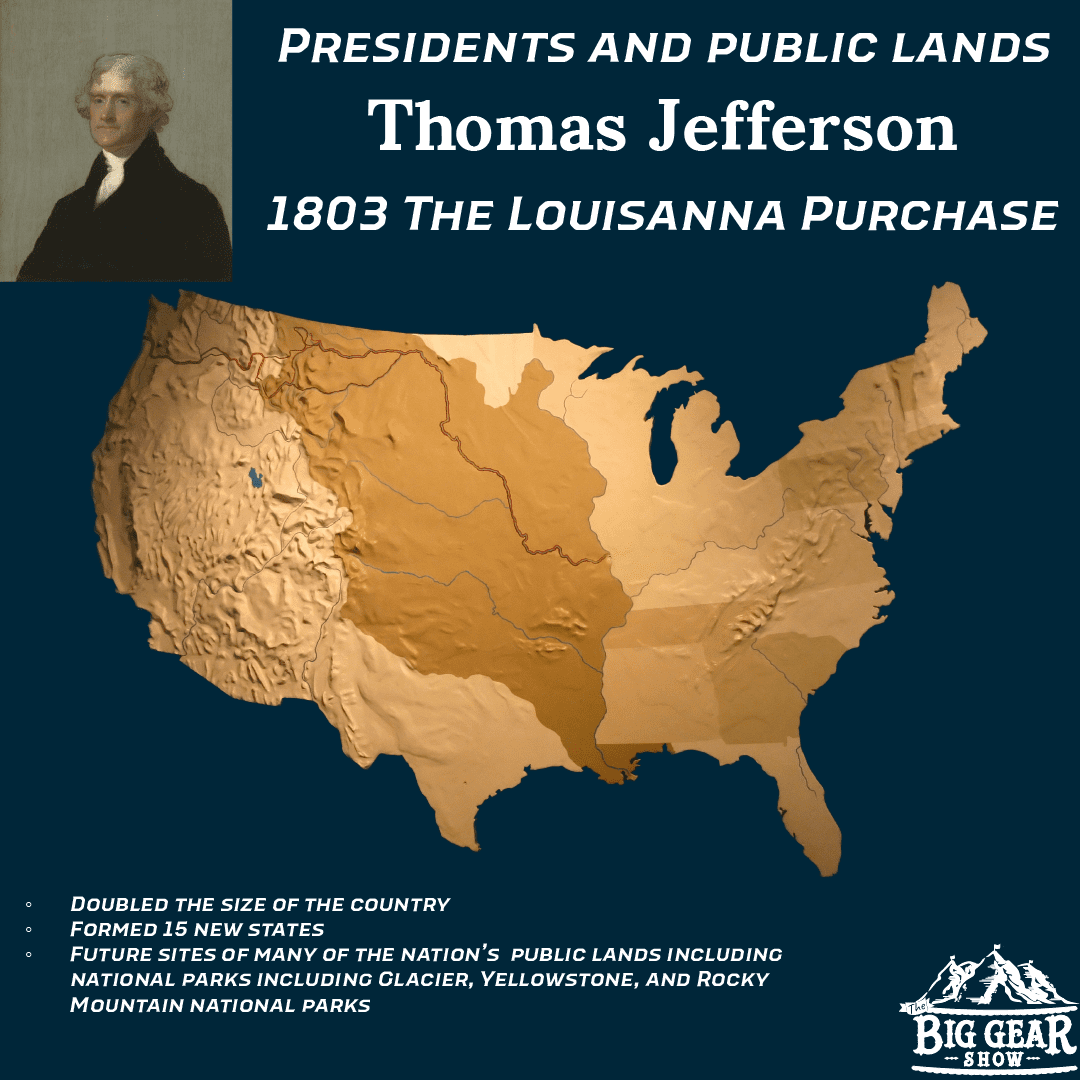
President Thomas Jefferson’s public lands legacy centers on the 1803 Louisiana Purchase. Doubling the size of the country, the United States acquired territory that formed 15 new states and included the future sites of many national parks, including Glacier National Park, Yellowstone National Park, and Rocky Mountain National Park. Jefferson also sponsored the Lewis & Clark Expedition, significantly adding to the continent’s zoological and botanical knowledge.
Despite being one of our greatest presidents, people don’t often think about President Abraham Lincoln when it comes to conservation. However, he changed the course of America’s public lands when he signed a law setting aside Mariposa Grove and Yosemite Valley as protected lands in 1864. Overshadowed by the Civil War, this news received little attention. Still, it set a significant precedent — places of scenic and natural importance should be protected for the enjoyment of all people.
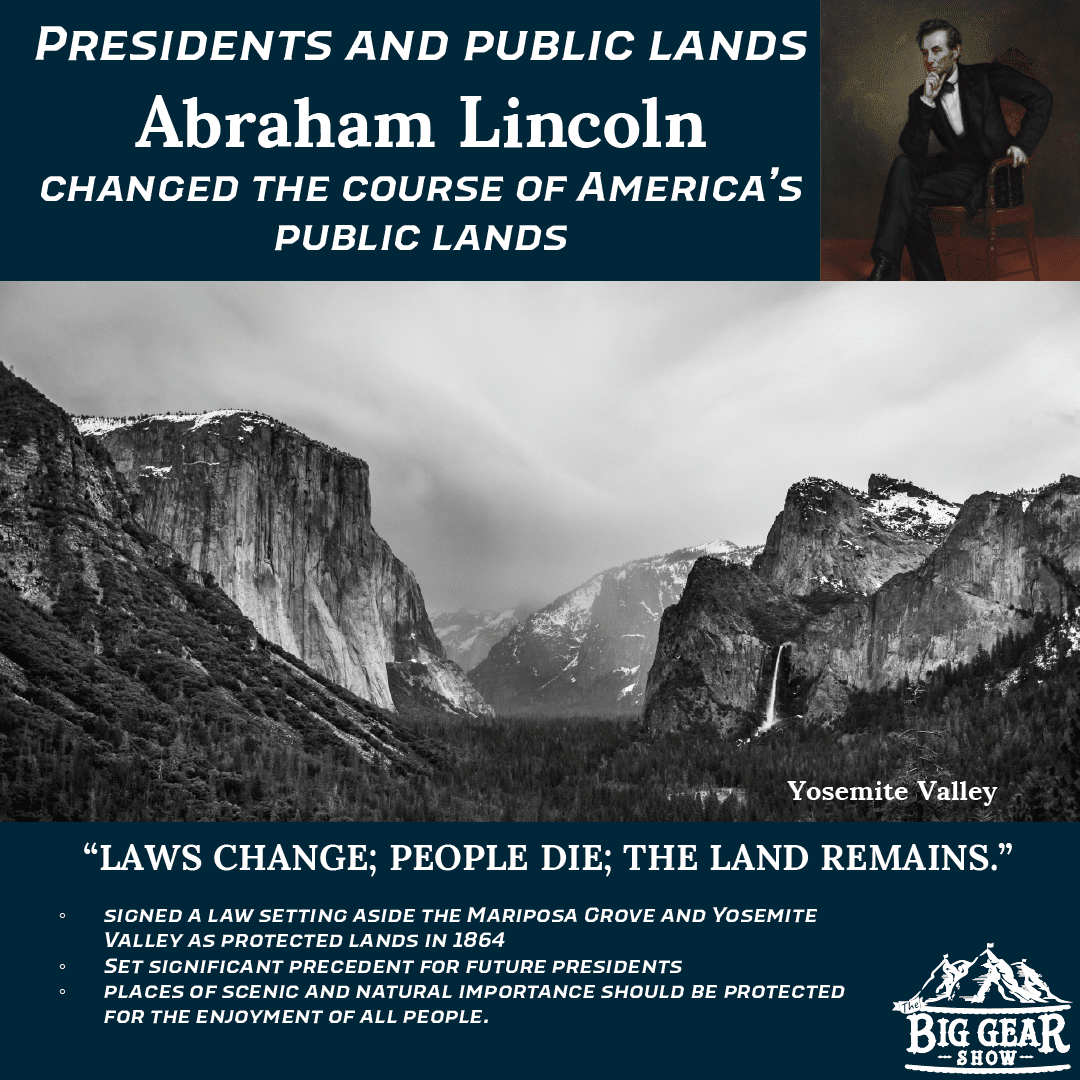

In 1868, President Grant declared the Pribilof Islands in Alaska a reserve for the northern fur seal, the earliest instance of a president using federal land to protect wildlife. Then, in March of 1872, he signed the Yellowstone National Park Protection Act. The act created America’s first national park, protecting a large swath of land “dedicated and set apart as a public park or pleasuring-ground for the benefit and enjoyment of the people.”
Theodore Roosevelt
President Teddy Roosevelt, an avid conservationist and outdoorsman, was one of the most impactful presidents in regard to the protection of public land. Roosevelt designated an impressive 230 million acres of public land in the form of 150 national forests, 51 federal bird reserves, four national game preserves (the president loved hunting), five national parks, and 18 national monuments.
In 1906 Roosevelt signed the Antiquities Act, which gave presidents the authority to protect “historic landmarks, historic and prehistoric structures, and other objects of historic or scientific interest that are situated upon the lands owned or controlled by the Government of the United States.” These protected areas were called national monuments.
To this day, the act is largely regarded as one of the best ways to protect and defend American landscapes. Under that act, Roosevelt protected Native American artifacts and ruins at Wyoming’s Devils Tower, the country’s first national monument. The tower is regarded as a sacred site and tribes still perform ceremonies in the area. Roosevelt designated the Grand Canyon a national monument in 1908, and just over a decade later it became a national park.

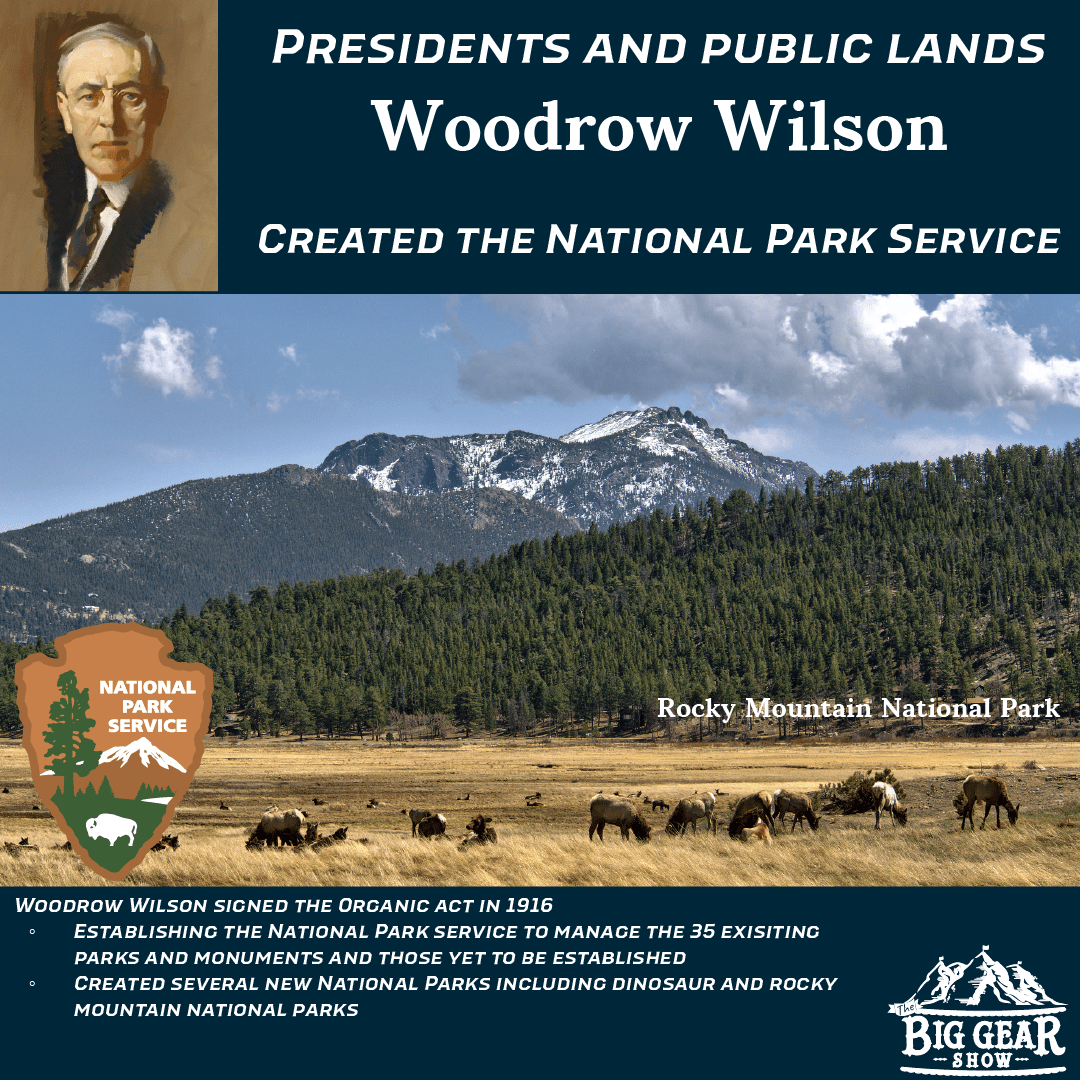
In 1916, President Woodrow Wilson signed the “Organic Act,” creating the bureau responsible for protecting America’s 35 already existing national parks and monuments and those yet to be established. Our national parks are called America’s best idea, and this year, we’re celebrating 100 years of the National Park Service. Wilson’s administration also presided over creating of several new national parks, including icons like Dinosaur National Monument and Rocky Mountain National Park.
As a lifelong lover of nature and wildlife, President Franklin D. Roosevelt undertook many executive actions to protect and improve public lands. Not only did he create 11 national monuments including Joshua Tree, which later became a National Park.
His New Deal program — the Civilian Conservation Corps — dramatically impacted existing park lands. Millions of people were put to work building infrastructure in national parks and forests, ultimately planting billions of trees, building roads and trails, and combating soil erosion.
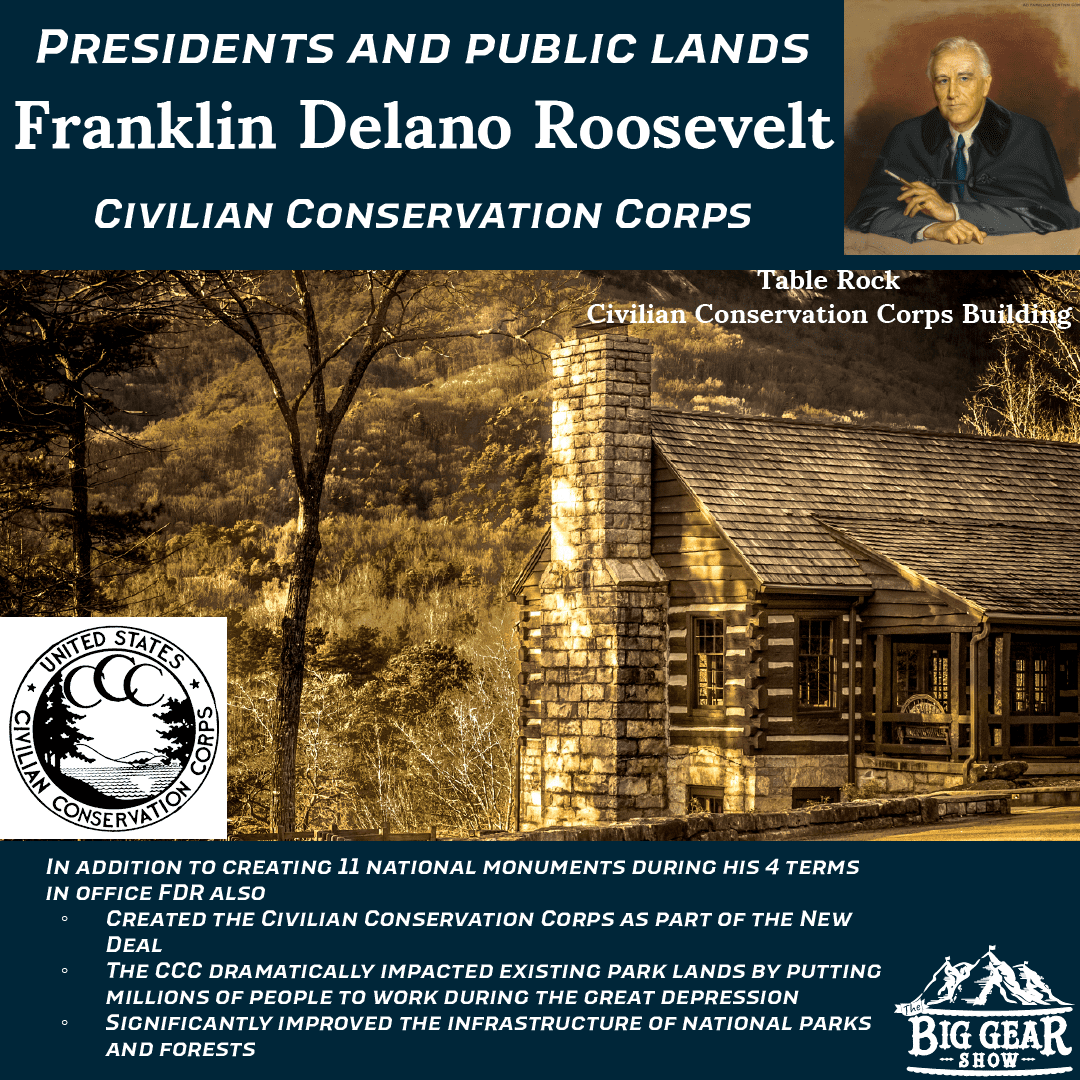
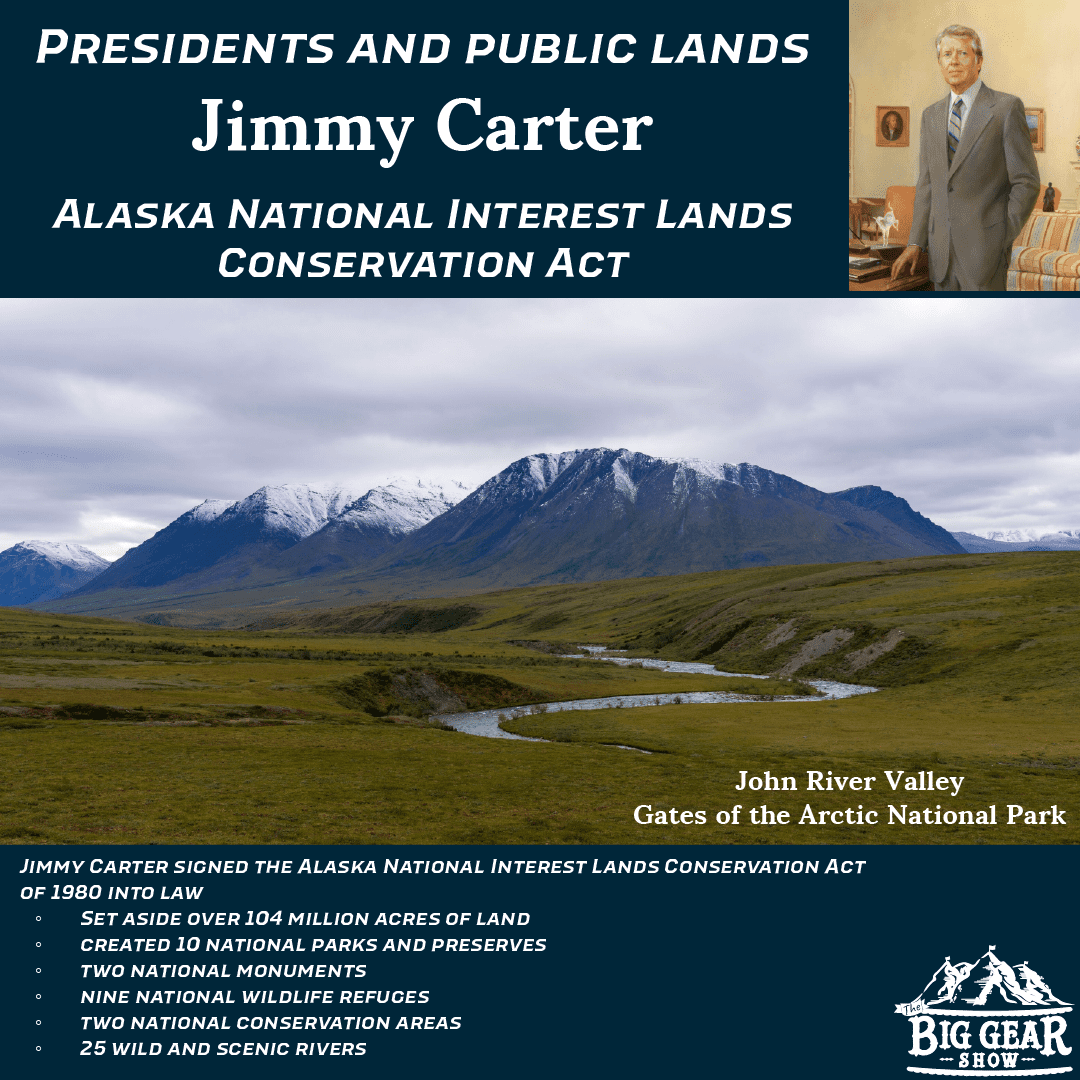
In 1978 President Carter used the Antiquities Act to designate 17 national monuments in Alaska, protecting 56 million acres of land from mineral extraction. “I have taken several actions to protect Alaska’s extraordinary Federal lands. Because of the risks of immediate damage to these magnificent areas, I felt it was imperative to protect all of these lands,” said Carter in a statement, adding that the areas include “some of the most spectacular scenery and wildlife in the world.”
Carter also signed: The Endangered American Wilderness Act – adding 1.3 million acres of wilderness areas and The Alaska National Interest Lands Conservation Act – protecting over 100 million acres of land in Alaska, including the creation:
- Ten national parks and preserves
- Two national monuments
- Nine national wildlife refuges
- Two national conservation areas
- Twenty-Five wild and scenic rivers
President Obama designated twenty-nine new national monuments and expanded five others during his time in office—from Organ Mountains-Desert Peaks National Monument in New Mexico and Utah’s Bears Ears National Monument to expanding Pacific Remote Islands Marine National Monument. Obama designated more monuments than any of his predecessors, using the Antiquities Act to protect 550 million acres of land and waters under federal protection. Obama designated Stonewall National Monument in 2016, the first monument that honored the LGBTQ movement.
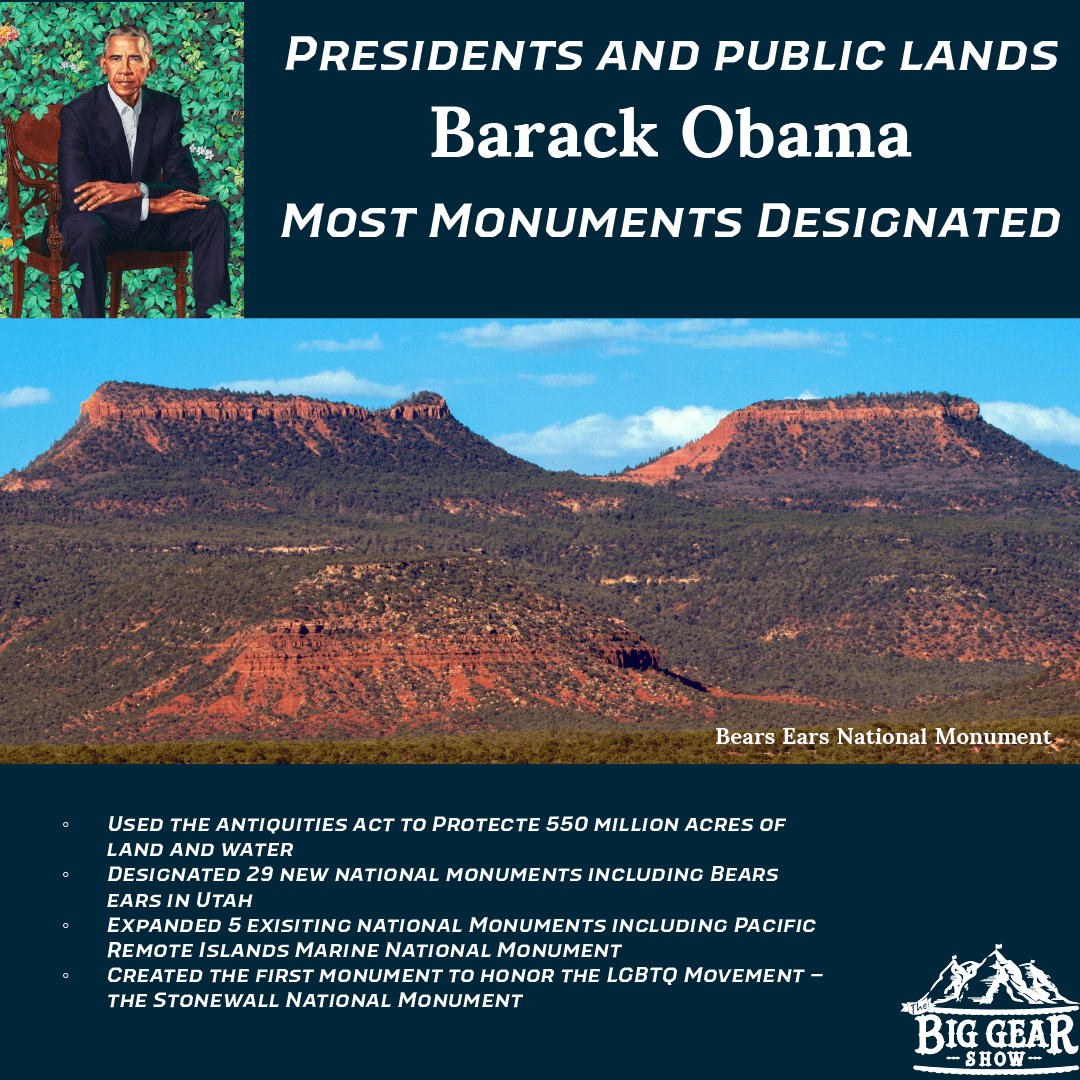

The 46th President made history by nominating the first Native American – New Mexico Representative Deb Haaland – to a cabinet secretary position. Quite appropriately, he named her the Secretary of Interior, placing her in charge of many of the agencies that manage our nation’s public lands, including the National Park Service and the Bureau of Land Management as well as the Bureau of Indian Affairs. Additionally, Biden restored full protections for Bears Ears, Grand Staircase-Escalante and Northeast Canyons and Seamounts national monuments; reinstated “roadless” forest protections on the Tongass National Forest in Alaska; and canceled toxic mining leases next to the Boundary Waters Canoe Area Wilderness in Minnesota.
During the 117th Congress, legislation was introduced to address indigenous people and public lands. Additionally, as President Biden highlighted during his remarks at the Tribal Nations Summit, the 2021 Bipartisan Infrastructure Bill included “the single-largest investment in Tribal infrastructure ever is going to occur: more than $13 billion in direct investments to Indian Country and tens of billions more in grants and future funding opportunities — funding for clean drinking water, high-speed Internet, roads and bridges, environmental cleanups, and so much more.”

